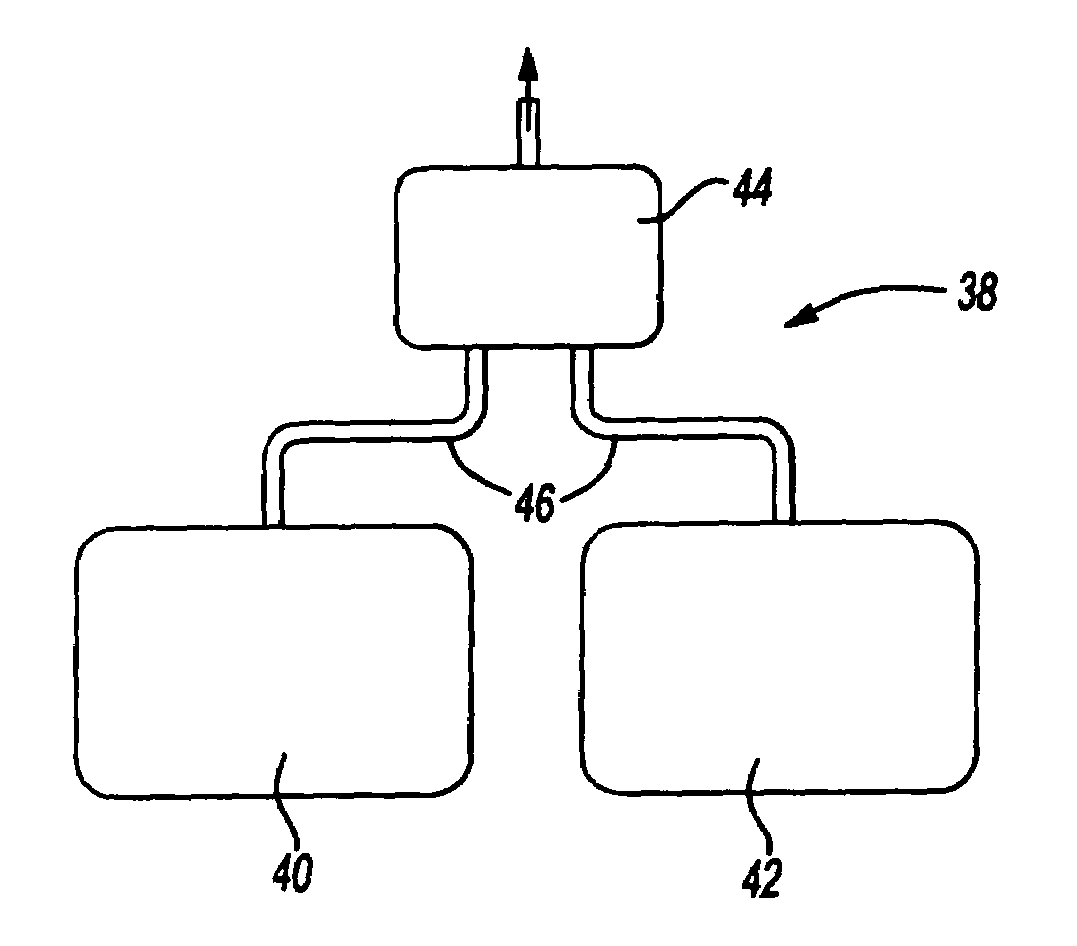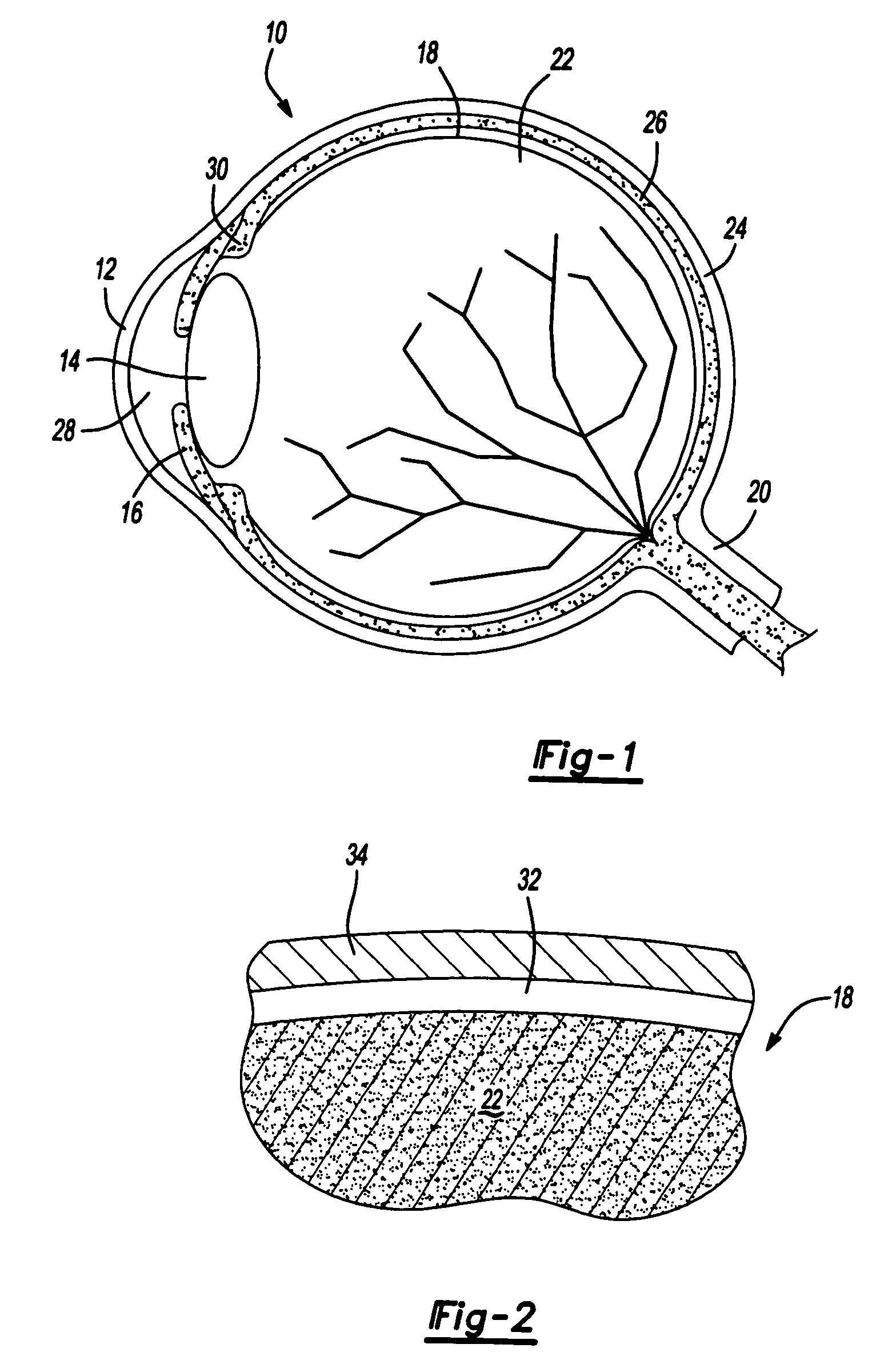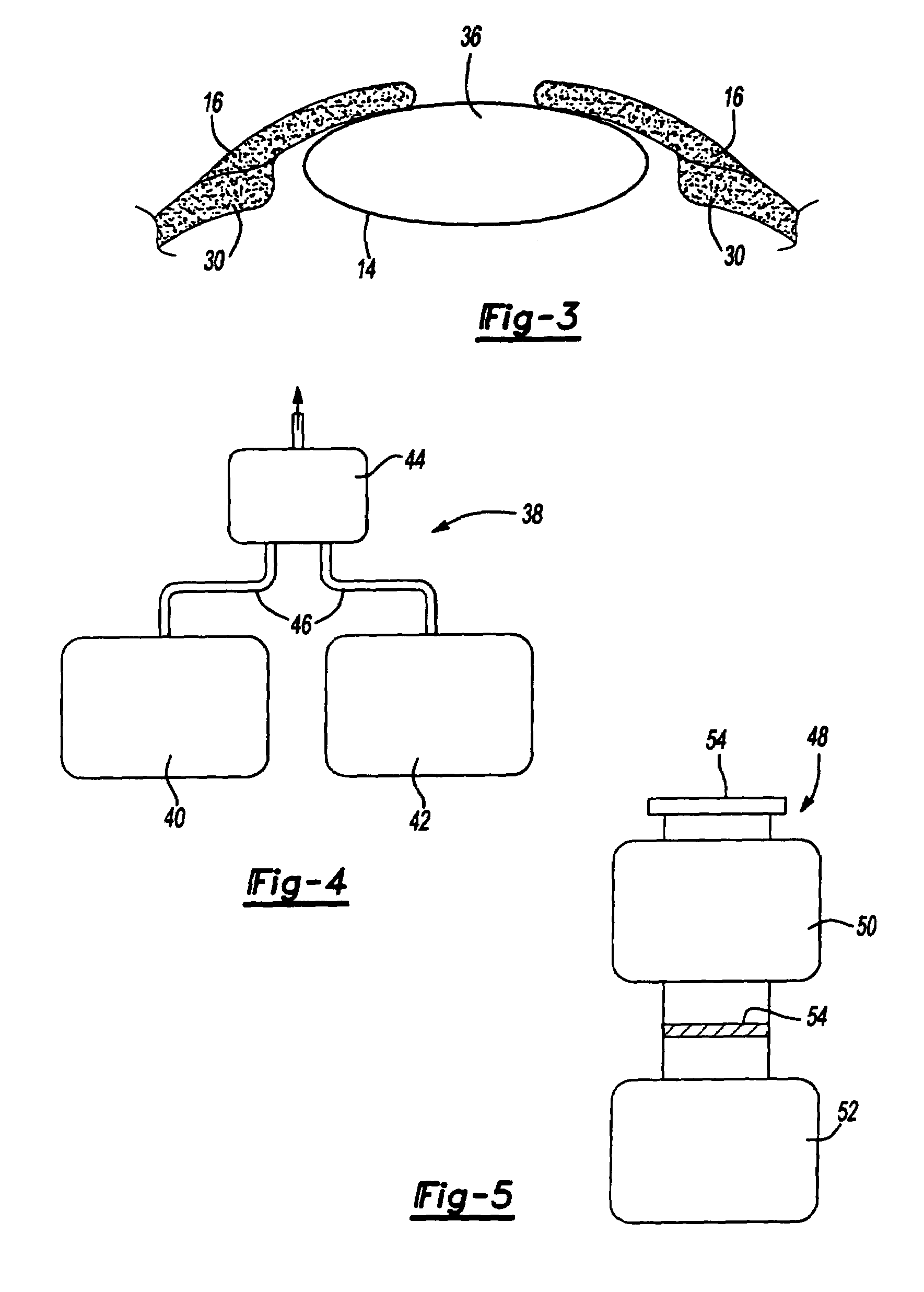Ophthalmological surgery colorant and delivery system
- Summary
- Abstract
- Description
- Claims
- Application Information
AI Technical Summary
Benefits of technology
Problems solved by technology
Method used
Image
Examples
example 1
[0065]About 25 mg of sterile ICG powder (e.g., IC-GREEN™, Akom, Inc, Buffalo Grove, Ill.) is dissolved in about 0.5 ml of sterile aqueous solvent. The mixture is shaken for approximately 5 minutes until there is a homogenous green solution without any visible particles. About 4.5 ml of sterile balanced salt solution is added to produce a solution with a final ICG concentration of 0.5% and osmolarity of 270 mOsm.
[0066]Human cadaveric eyes are examined in the laboratory to determine if the ICG solution stains the retinal ILM. The entire anterior segment of the eye is excised to gain access to the vitreous cavity. Following open sky vitrectomy, 0.3 ml of ICG solution is injected through a 5 micron filter into the posterior vitreous cavity over the macula. The dye is left in place on the macula for 5 minutes. The ICG is then removed by mechanical aspiration leaving the stained ILM clearly visible as characterized by a bright green color. A bent 22g needle is used to create the initial I...
example 2
[0070]The procedures of Example are followed using human patients having macular holes, epiretinal membrances, or both. Successful peeling of the ILM, the epiretinal membrane or both is achieved using indocyanine green staining.
PUM
 Login to View More
Login to View More Abstract
Description
Claims
Application Information
 Login to View More
Login to View More - R&D
- Intellectual Property
- Life Sciences
- Materials
- Tech Scout
- Unparalleled Data Quality
- Higher Quality Content
- 60% Fewer Hallucinations
Browse by: Latest US Patents, China's latest patents, Technical Efficacy Thesaurus, Application Domain, Technology Topic, Popular Technical Reports.
© 2025 PatSnap. All rights reserved.Legal|Privacy policy|Modern Slavery Act Transparency Statement|Sitemap|About US| Contact US: help@patsnap.com



